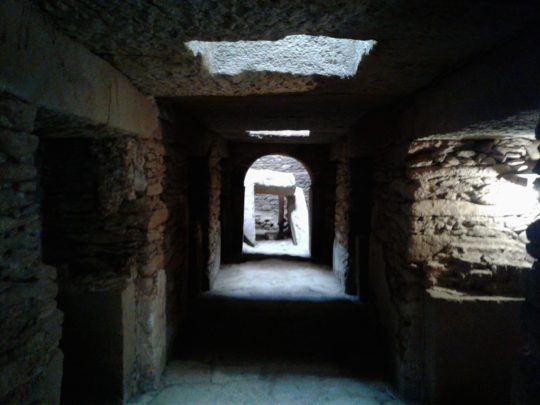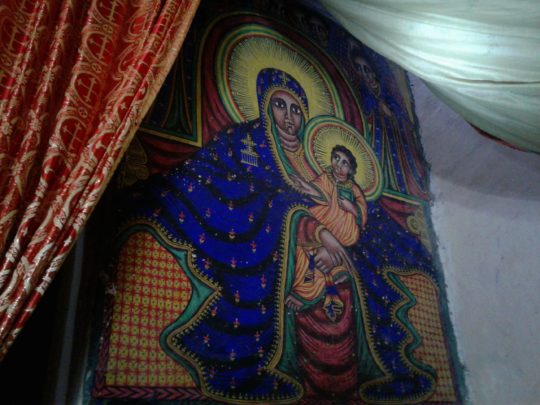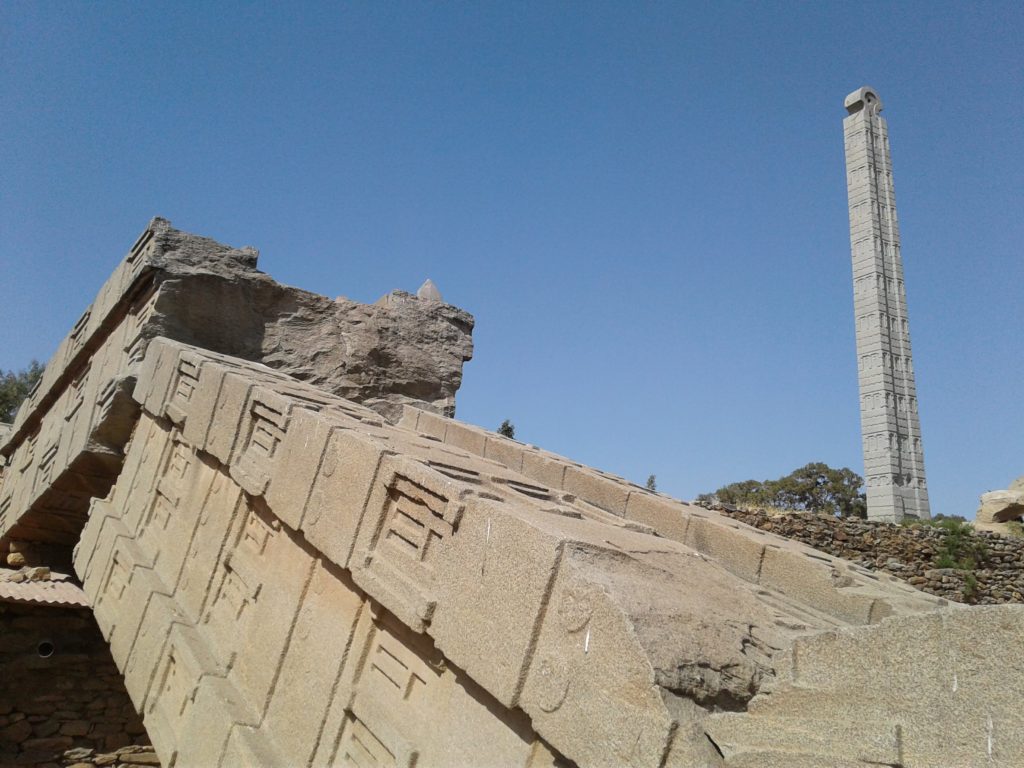In biblical times, the Kingdom of Axum was known as the home of the brilliant, dark, and lovely Queen of Sheba and the final resting place of the Ark of the Covenant, which held the tablets upon which the Ten Commandments were inscribed. Axum, which also went by the name Ethiopia as early as the 4th century AD, was a world power at the center of trading routes between India and the Mediterranean. The Axumites were also among the first in the world to adopt Christianity as their state religion.
In pre-Christian times, however, the Axumites had the practice of erecting carved granite monoliths called stelae, which functioned as the tower-like gravestones of Axumite royalty. Over 500 stelae remain in Ethiopia, Eritrea, and Somalia—modern-day states covering part of Axum’s once vast domain—some over 1,700 years old and reaching nearly 110 feet in height (or, rather, length, as the tallest toppled and broke while being constructed).
The modern city of Aksum, on the site of the former imperial capital in northern Ethiopia, hosts the imposing stelae, eerie royal tombs, humbling churches, and a population of regal bearing.








Have you been to Aksum?

